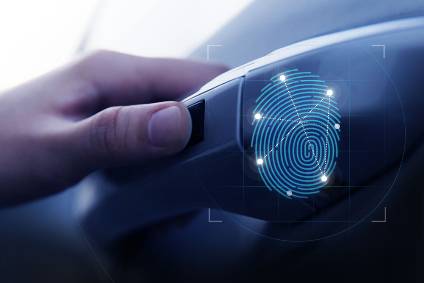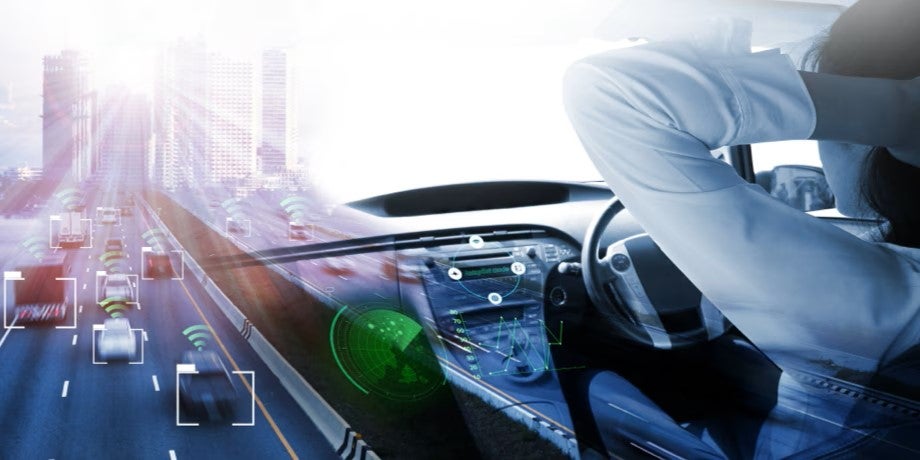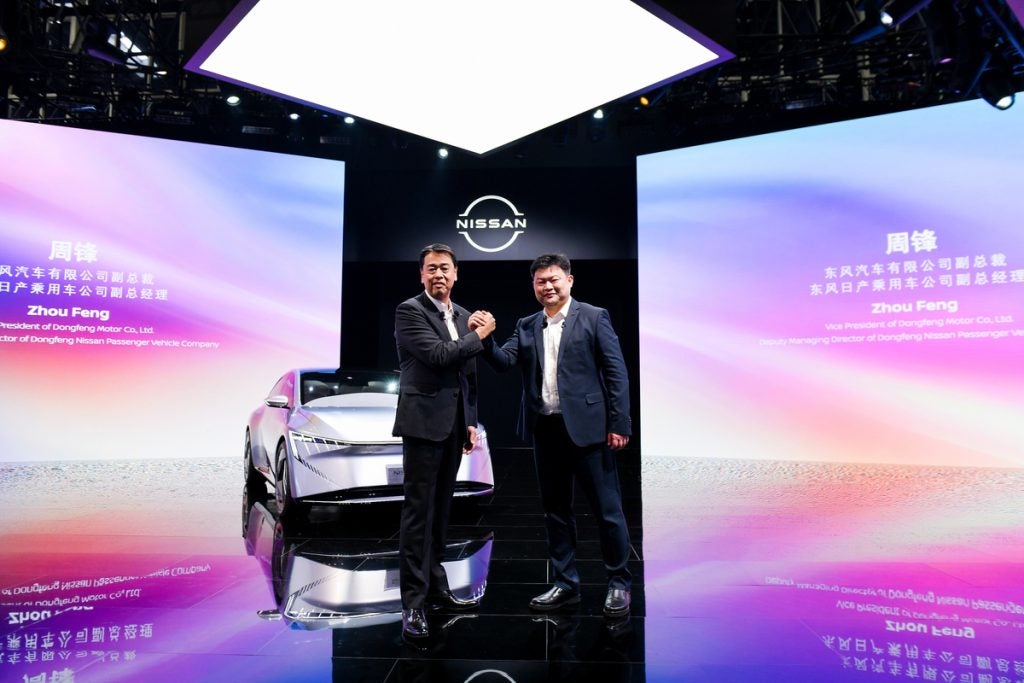
While most of us are accustomed to using our fingerprint to unlock our phones, can biometrics be used to reliably unlock our cars? Some automakers are exploring the application of fingerprint sensors as well as retinal scans, and voice/facial recognition to replace the conventional key fob for accessing a car and starting its engine. Continuing just-auto/AIC’s series of research snapshots, Matthew Beecham assesses the stage reached with fingerprint sensors to access the car.
Unlocking the potential
Fingerprint sensors for unlocking cars may be applied to car door handles, steering wheels and starter buttons. For example, the Hyundai Santa Fe features a system which starts and unlocks the car using the driver’s fingerprint, eliminating the need for traditional keys. The Korean automaker plans to add personalised steering, temperature and humidity settings using biometrics. Integrating fingerprint recognition into a door handle marks a world first, as fingerprint sensors have previously been used to start the car’s engine by Nissan and others.
Last year, Hyundai Mobis set about investing some US$5 million in China’s Deep Glint, which has technologies regarding object recognition and behaviour pattern analysis using AI. The technology partnership is expected to be carried out in such areas as vehicle security authentication as well as driver status monitoring and in-vehicle virtual assistant.
True keyless car
Vehicle authentication can also use facial recognition technology to authenticate the driver. If a driver is identified, the car door will be opened or it will start. As more and more electronic devices in vehicles are being integrated, interest over vehicle security against hacking smart keys arises. For this reason, the auto industry is considering technologies that use multiple authentication methods. For example, Jaguar Land Rover has filed a patent for a biometric system to allow car owners to open the door based on a combination of facial and gait recognition.
How well do you really know your competitors?
Access the most comprehensive Company Profiles on the market, powered by GlobalData. Save hours of research. Gain competitive edge.

Thank you!
Your download email will arrive shortly
Not ready to buy yet? Download a free sample
We are confident about the unique quality of our Company Profiles. However, we want you to make the most beneficial decision for your business, so we offer a free sample that you can download by submitting the below form
By GlobalDataTouch and go
Other automakers are testing various models where sensors are integrated into door handles, key fobs, touchscreens and steering wheels. Similar to wearables, this capture of biodata is being used for health and fitness applications to answer the question: Is this person fit enough to operate this vehicle?
While automakers and suppliers are pushing back the technical boundaries of biometrics, startups are also playing an important role. For example, an Intel-backed start-up called FogHorn is developing an automatic car unlocking system with Porsche that uses an infrared camera.
Global electronic companies are wading into the market too. Apple has filed a patent application for a system that would add a layer of biometric security to vehicles. This patent demonstrates that biometrics and car security are coming into focus, particularly as the auto industry continues to develop semi- and fully-autonomous vehicles.
There are, of course, shortcomings with any security system. Fingerprints can be forged and systems that utilise face-scanning rely on databases that can be hacked.
Addressing some of these concerns, Gentex Corp is exploring ways to thwart thieves, including an iris-based authentication system. Craig Piersma, Director of Marketing & Corporate Communications for Gentex, told just-auto: “When it comes to biometrics, Gentex is looking to enhance the security of connected car features with an in-vehicle biometrics system that authenticates the driver with an iris scan to deliver customised security, comfort and convenience features. The system consists of a mirror-integrated display, near-infrared emitters, an iris-scanning camera, and system-level intelligence. Upon entering the vehicle, a glance to the mirror by an authorised user would allow the vehicle to operate, personalise the cabin (adjust seat position, HVAC controls, music favourites, etc.) and sanction safe, secure access to a host of cloud-based, connected-vehicle services, like home automation control, tolling, and in-vehicle payments.”
There are other limitations too. Removing gloves to unlock a vehicle in freezing temperatures is undesirable, and a sensor covered in ice or rain might not be able to register the fingerprint.
Driver preferences
Industry interest in fingerprint and facial recognition inside cars is also gathering momentum. For instance, Chrysler is developing a solution that will recognise the driver’s face to tailor seat position, music station, diary and other settings tuned to personal preferences.
BMW deploys Nuance Communications technology that recognises voices and selects a music from that person’s voice.
Panasonic is working on a ‘Living Space’ vehicle which will transform into adaptive space that meets the vehicle occupant’s needs from relaxation zone to an entertainment centre.
The HMI specialist Preh has developed a fingerprint sensor that can be integrated into a door-control module and can be used to scroll through lists or maps. When a user’s fingerprint is detected, the various individual settings can be applied. Thus, the settings of mirrors, seat, and temperature, or of the chassis and transmission, which have already been stored initially by means of the fingerprint recognition, can be applied automatically.
Continental used the 2017 Consumer Electronics Show (CES) to debut its Biometric Access System. Drivers in cars with the system must provide fingerprint authentication to start the engine, helping prevent theft. Meanwhile, an interior camera uses facial recognition software to adjust the car’s settings based on the driver. During an interview with just-auto at the 2020 CES, Werner Köstler, Head of Strategy & Business Development, Vehicle Networking and Information, Continental said: “Based on our systems integration know-how, we combine our keyless entry and start system PASE with biometric elements to increase comfort and security. This means, for example, that the presence of a valid key inside the vehicle is no longer enough to start the engine as the driver is also required to provide authentication using a fingerprint sensor. This two-fold authentication process significantly increases the vehicle’s anti-theft protection measures. Biometric elements also allow drivers to personalise their vehicles. The system is connected to an interior camera, which recognises the driver’s face and automatically personalises vehicle settings, such as seat and mirror position, music, temperature, and navigation, for the driver in question.”
Next steps for in-car biometrics
In-car biometrics can do more than unlock cars, however. The technology can be applied to detect driver health by monitoring their heart rate, blood pressure, drowsiness, levels of blood alcohol content, and even warnings about a potential epileptic seizure. In-car biometrics can also assist with vehicle security and enable the driver to personalise settings, including cabin temperature, radio and seat adjustment. All seems to make sense.







